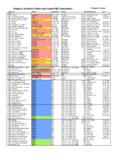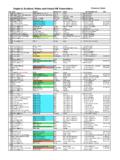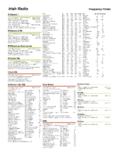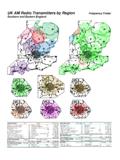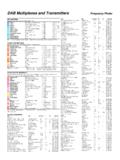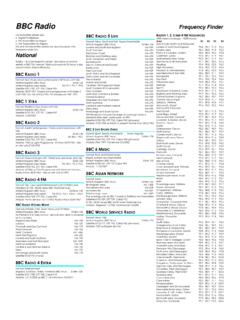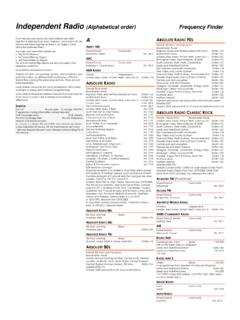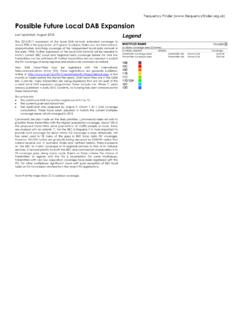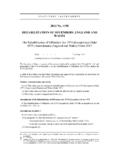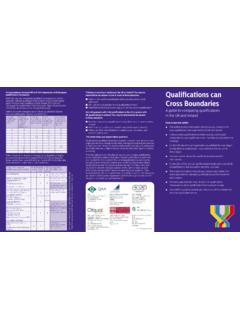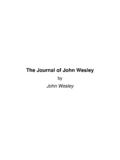Transcription of Introduction to DAB Digital Radio - Frequency Finder
1 Frequency Finder ( ) Introduction to DAB Digital Radio Digital audio broadcasting (DAB) is a free-to-receive terrestrial Radio transmission system, like AM and FM, and uses a separate region of the Radio spectrum. This article begins with a brief explanation of how DAB is transmitted, followed by an Introduction to DAB in England, Scotland, Wales and Northern Ireland. Sound quality and reception quality are then discussed, followed by an overview of DAB in other countries and a discussion of other Digital Radio standards. DAB Transmission DAB Digital Radio uses a transmission system known as coded orthogonal Frequency division multiplex (COFDM).
2 This divides the signals amongst several hundred low bit rate carriers. Because the bit rates are low, the signal can be subject to large multipath dispersion without any adverse effect on reception. In fact, multipath reinforces and improves reception. For DAB, the bit rates on the individual carriers are low enough for different transmitters carrying the same programmes to broadcast on the same Frequency , provided they are correctly synchronised. This enables much more efficient use of the Radio spectrum. Each DAB transmission, known as a multiplex, is spread over about MHz, with 4 phase (2 bit) symbols. This gives a data rate of about Mbit/s, about half of which is used for error correction (though this may be varied).
3 Each multiplex carries between 6 and 15 Radio stations, depending on the bit rate (and hence sound quality) allocated to each station. The data for all the stations is distributed amongst all of the carriers. This is to ensure that interference to a few carriers does not cause more disruption to a particular station's bit stream than the error correction software can handle. Time interleaving is also used to protect against short duration interference spikes. DAB broadcasts in VHF band III between 174 and 240 MHz. This spectrum is shared with other users, including TV in some countries. Band III is divided into eight 7 MHz channels, numbered 5 to 12, each of which may be used for a TV multiplex, plus the 10 MHz wide channel 13.
4 Note that channels 1-4 are in band I, which is no longer used for broadcasting. Each 7 MHz channel is subdivided into four smaller channels, designated A, B, C and D, and channel 13 is subdivided into six channels, A-F. Thus, each DAB channel is designated by a number and a letter. For example, the BBC national multiplex uses channel 12B. DAB can also operate in the L band between 1452 and 1492 MHz. However, no country is operating permanent services in this band and most radios only receive VHF band III. DAB+ is an improved version of the DAB broadcasting standard used in many countries, but only to a limited extent in England, Scotland, Wales and Northern Ireland.
5 Multiplexes can carry a mixture of DAB and DAB+ stations and all DAB+ radios can also receive DAB. All new car radios and most new portable radios are compatible with DAB+; however, some cheaper portables and most older receivers are not. DAB in England, Scotland, Wales and Northern Ireland In September 1995, The BBC launched the world's first Digital Radio service on DAB in the London area, carrying its five national networks with outdoor coverage extended to 60% of the population by mid 1998 as receivers started to become available. A national commercial network, Digital One, launched with five stations in November 1999 as receivers started to become available, albeit relatively expensive.
6 Further stations launched on Digital One in 2000, together with the first local multiplexes. In 2002, the BBC launched five Digital -only national Radio stations and the first sub- 100 radios became available. By 2007, local Radio multiplexes covering 40 different areas were on air, each typically carrying 8 to 11 stations. Additional regional multiplexes served Central Scotland, the North East, North West, Yorkshire, the West Midlands, the Severn Estuary region and London (2), while coverage of the BBC and Digital One multiplexes had reached about 80%. Channels 11B to 12D were used. An additional spectrum four channels (10B to 11A) were allocated to DAB in 2006 and licences were awarded in 2007-8 for 12 new local Radio multiplexes for previously unserved areas and a third national multiplex.
7 However, the economic recession reduced advertising income, resulting in a halt in commercial DAB development. Digital One was reduced to four stations in 2008 and none of the new multiplexes launched, though services on the local and regional multiplexes continued. Digital One gradually filled up again by 2011, initially attracting minority broadcasters. In 2012, a decision was taken to abandon the regional multiplexes and invest in the local and national multiplexes. The local multiplexes licensed in 2007-8 launched between 2012 and 2015, with most of the regional multiplexes closing in 2013 (Central Scotland and London continue, while Yorkshire closes in 2015).
8 Some stations Introduction to DAB Digital Radio Frequency Finder ( ) broadcasting on the regional multiplexes moved to local multiplexes or Digital One while others closed. In 2015, the third national multiplex was re-awarded to the Sound Digital consortium, which launched in February 2016 and a plan to increase coverage of the local multiplexes to 90% (indoors) by the end of 2016 was instigated. Over this time, coverage of the BBC multiplex has continued to grow and will reach 97% (indoor) by the end of 2015. Digital One is also expanding coverage to 92% (indoor). By the end of 2015, DAB radios were available from 18 and fitted to about 80% of new cars.
9 DAB accounted for 27% of all Radio listening in 2015. From 2016, most people in the England, Scotland, Wales and Northern Ireland will be able to receive about 50 stations, about three times as many as on AM and FM combined (excluding out of area stations). All FM and AM national stations and most city, county and regional FM and AM stations are also available on DAB. The main areas where local and regional stations are not available on DAB are West Norfolk, South Wiltshire, Powys, Cumbria, Scottish Borders, Dumfries and Galloway, North West Scotland, the Channel Islands and the Isle of Man. Some smaller-scale FM and AM stations are also available on DAB, but most are not.
10 Many commercial stations have much wider coverage on DAB than on FM/AM, while about half the stations available on DAB are exclusive to Digital Radio . Thus programme choice is a key advantage of DAB in comparison with FM and AM. The next stage of DAB development in the England, Scotland, Wales and Northern Ireland will be the Introduction of a tier of small-scale multiplexes, typically broadcasting over a 10 km radius. A number of trial broadcasts are running between 2015 and 2018 and licensing of the permanent multiplexes is likely to begin in 2017. Major cities and large towns are likely to be served first. Ofcom has allocated the additional channels 7D, 8A, 8B, 9A, 9B and 9C for use by small-scale DAB.
